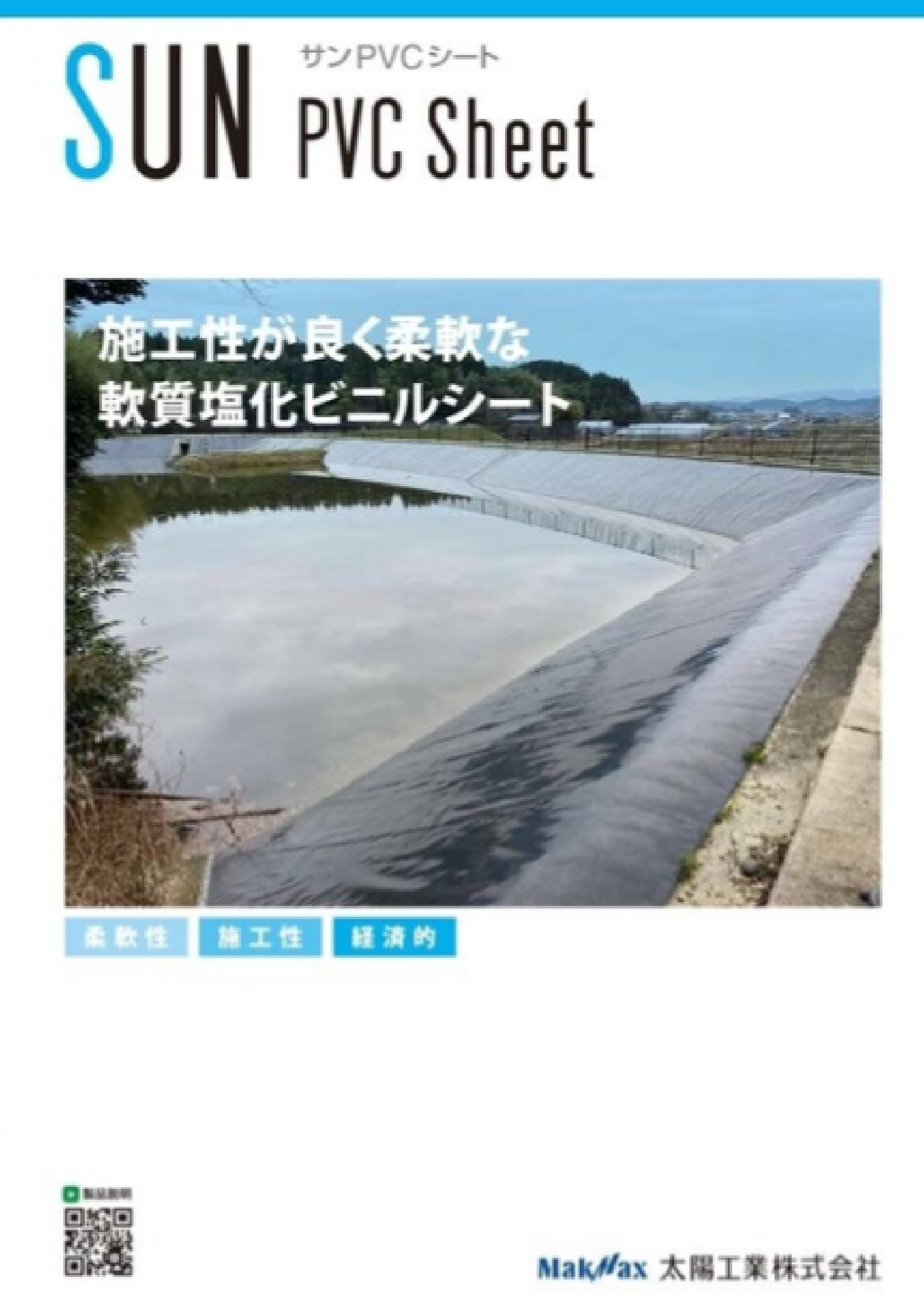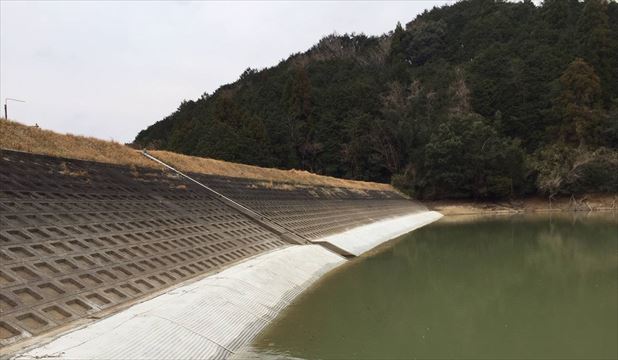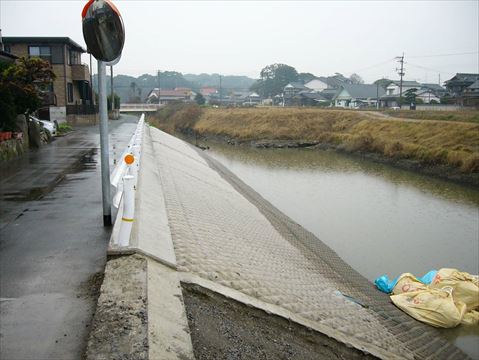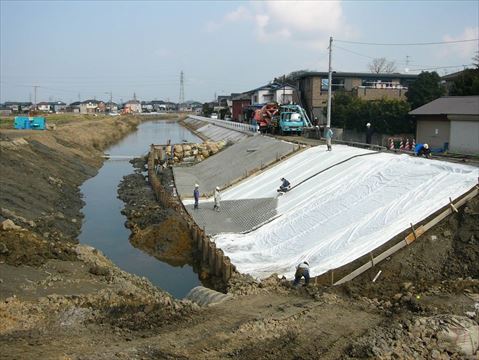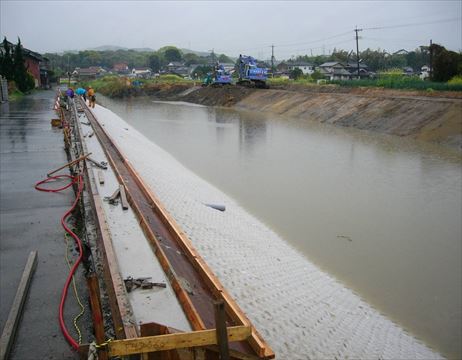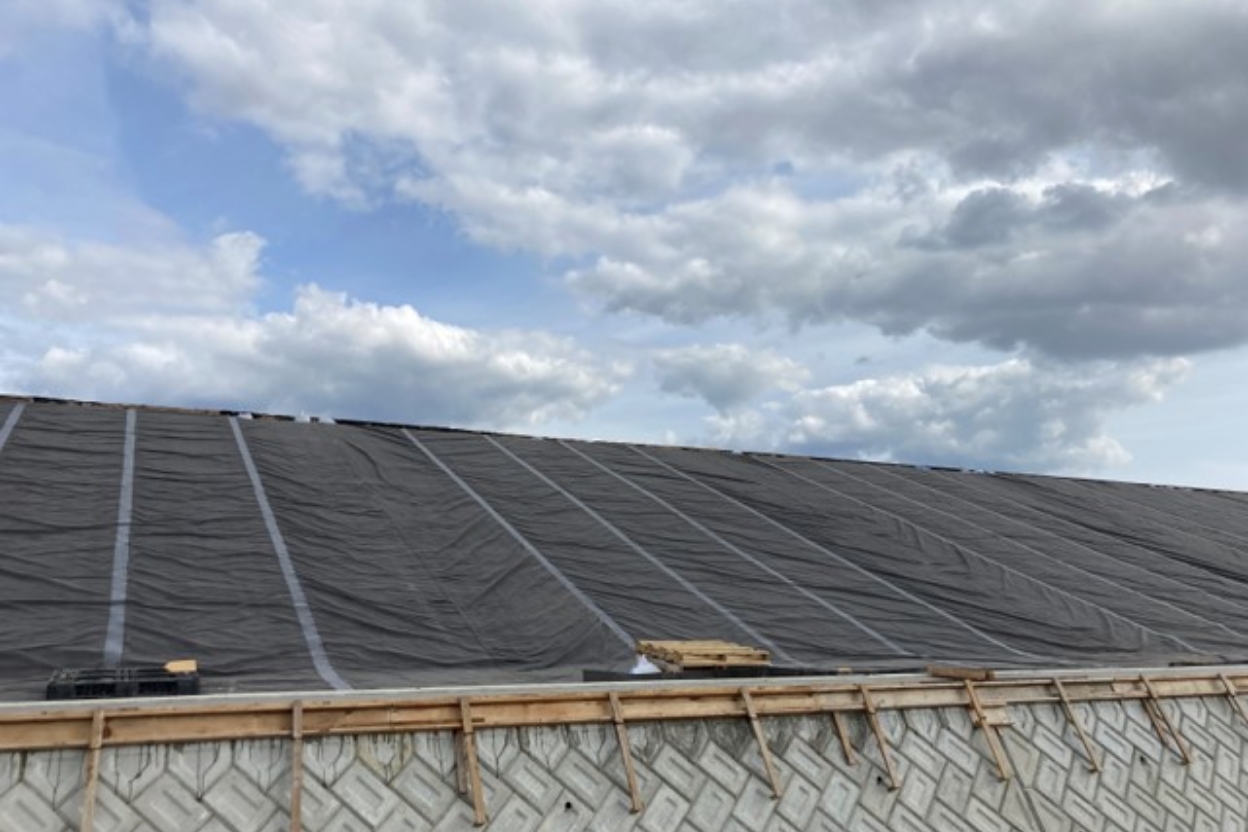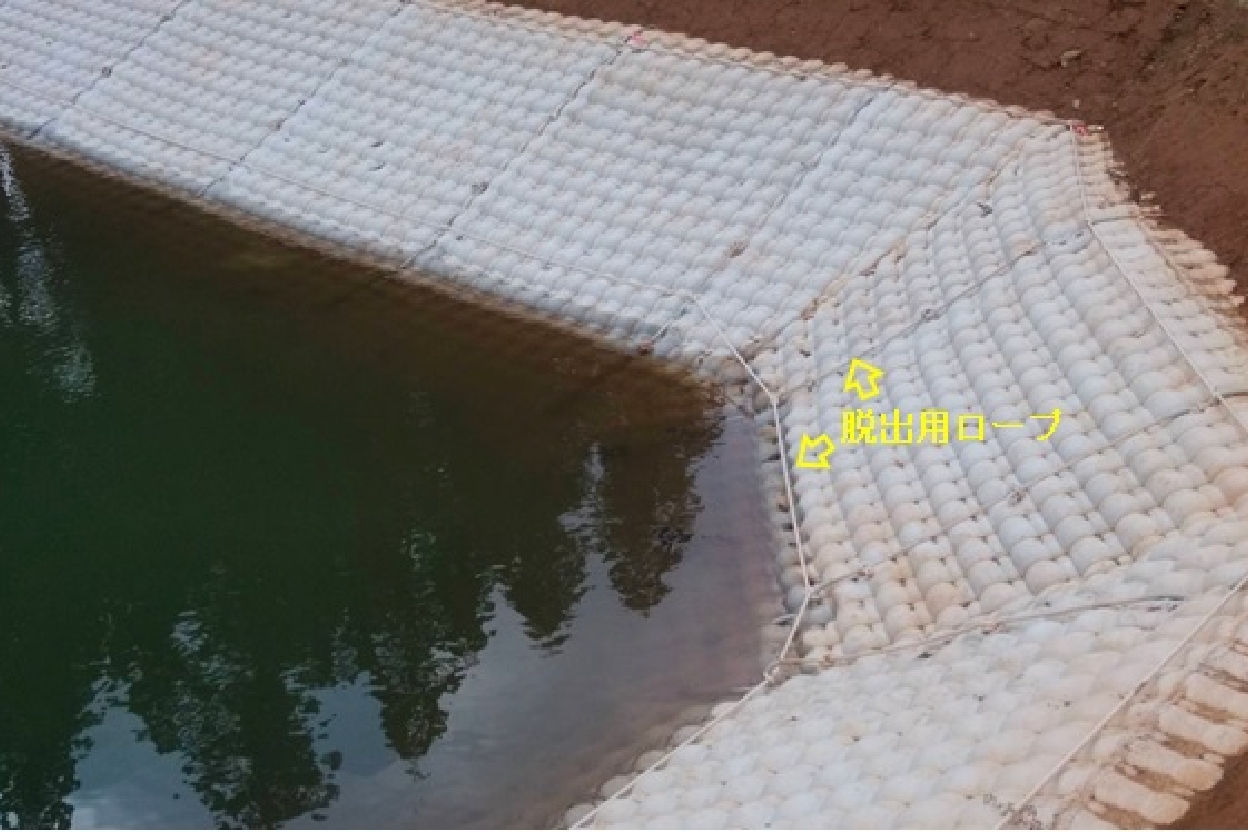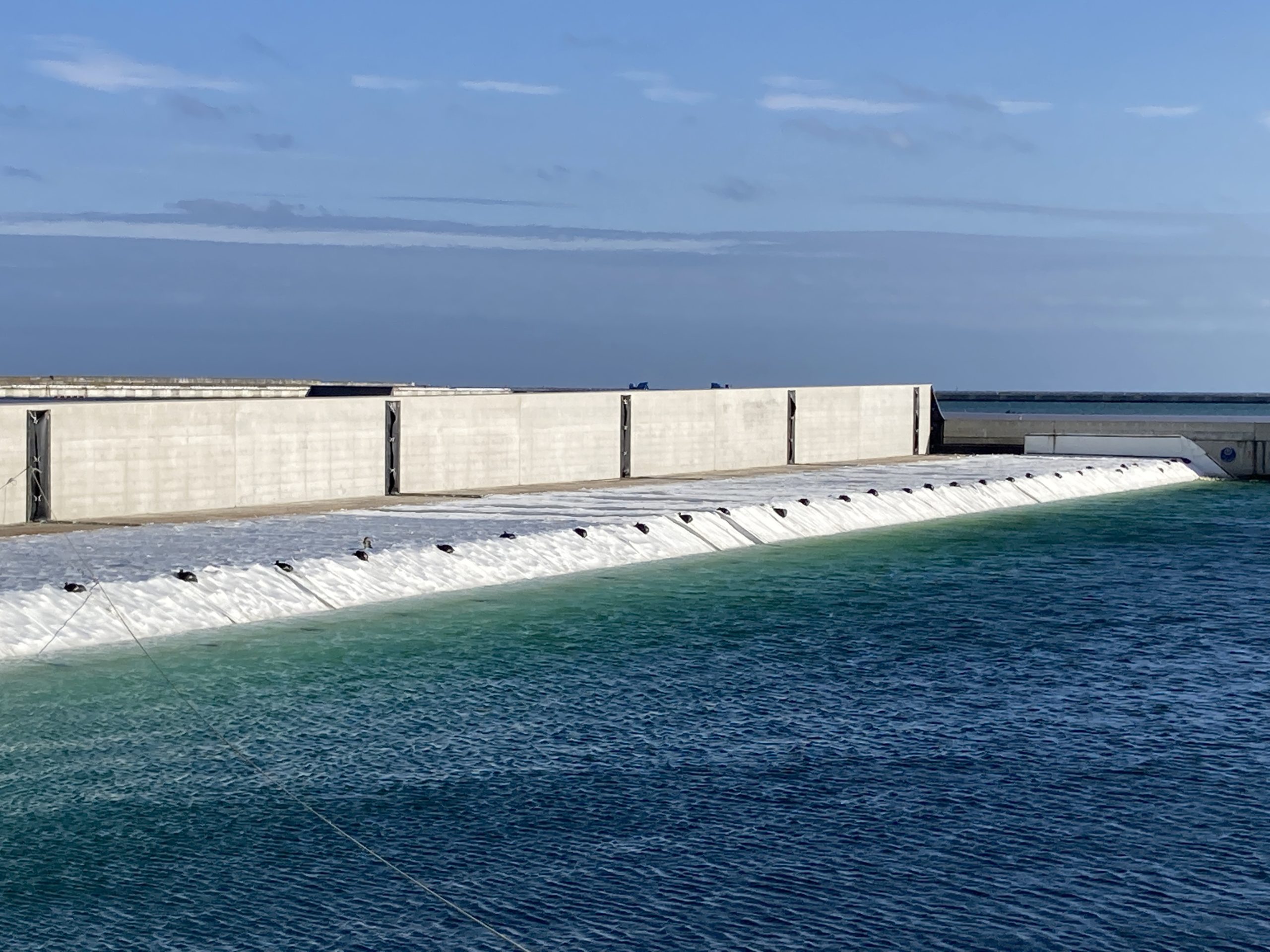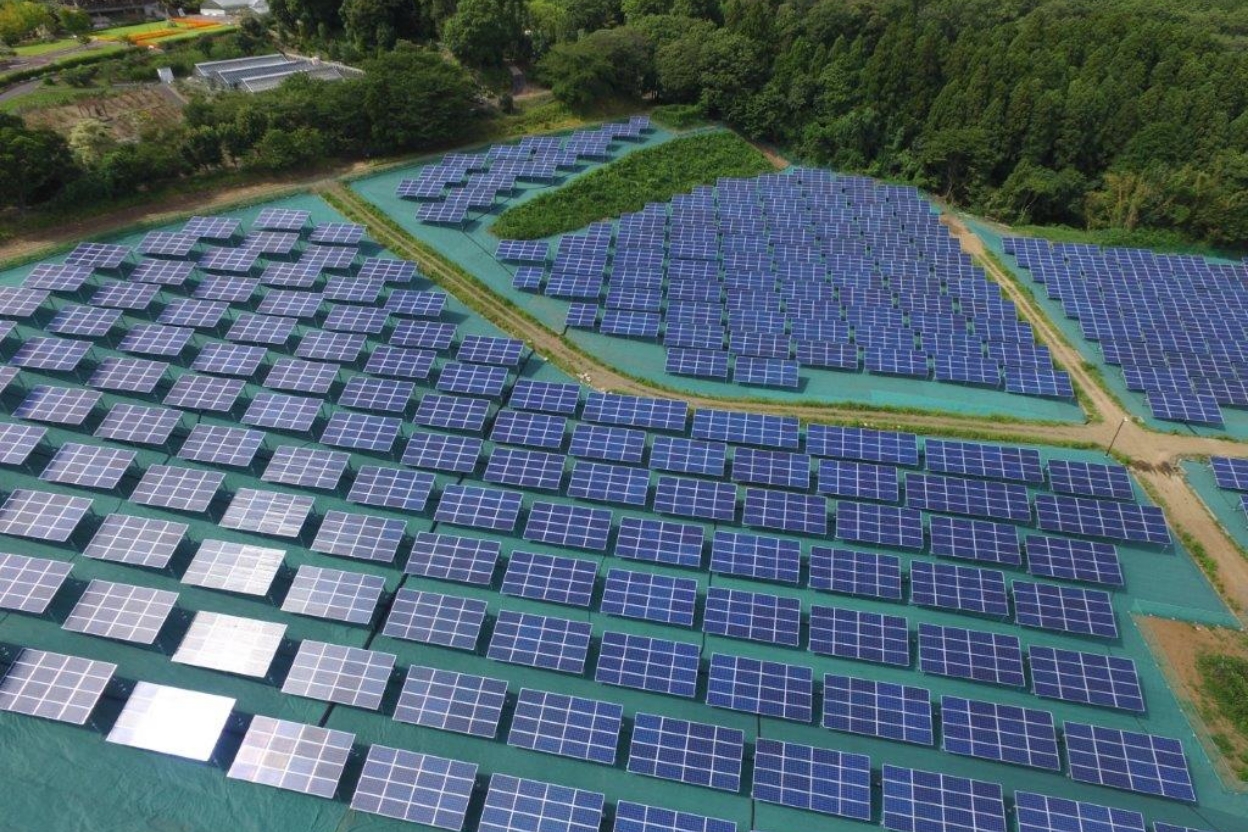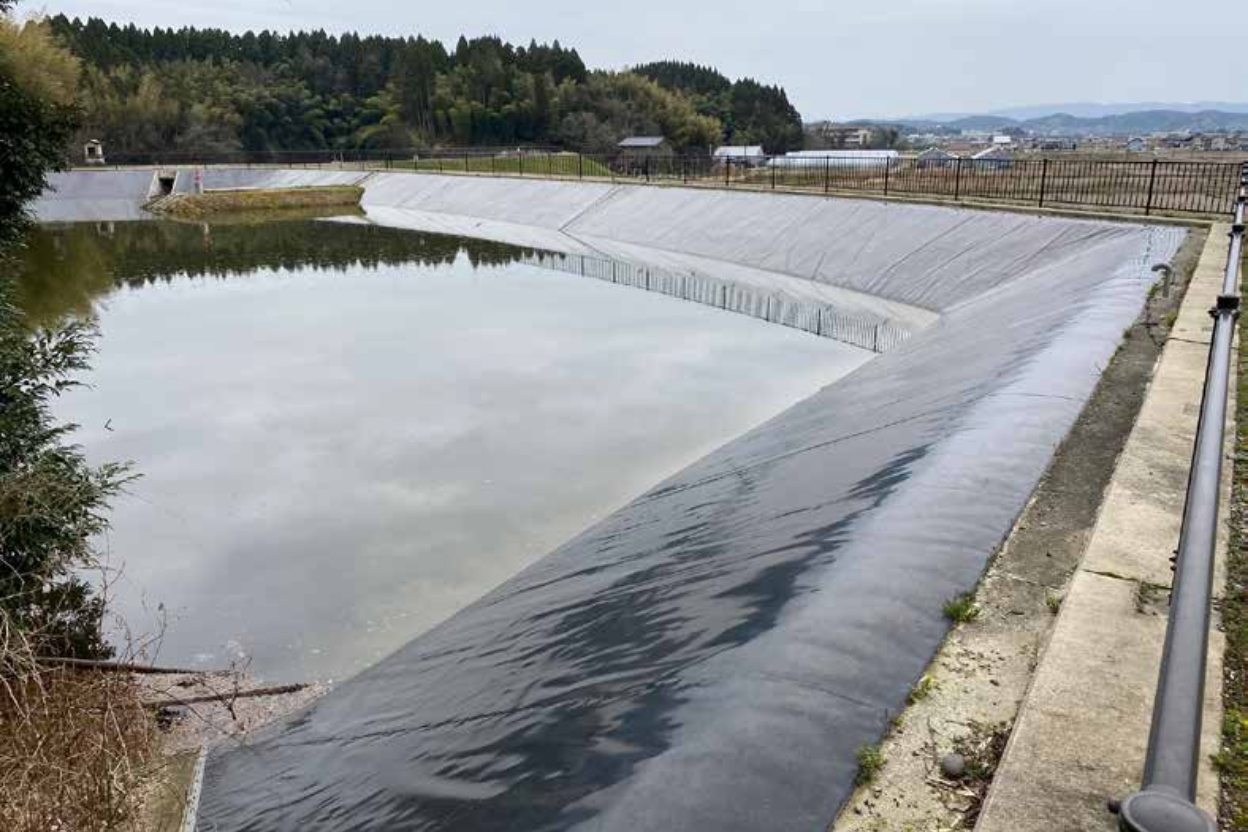
"Sun PVC Sheet"
-Soft polyvinyl chloride sheet-
The most common impervious sheet used in all civil engineering fields
San PVC sheeting can be used in all areas of civil engineering where waterproofing is required. It can be used for river, coastal, and harbor embankments, revetments, quay walls to prevent sediment absorption, and reservoirs for waterproofing. It can be used for preventing sediment from being sucked out of revetments and quays, and for waterproofing reservoirs.
*For sale only in the Japanese market
Related Achievements
Product & Service
Features
Flexible vinyl chloride sheet with excellent flexibility and processability
This is an impervious sheet made of vinyl chloride resin with excellent workability. It is flexible and can be installed anywhere. In addition, since the sheets can be thermally welded on site, they can be joined together in a watertight manner.
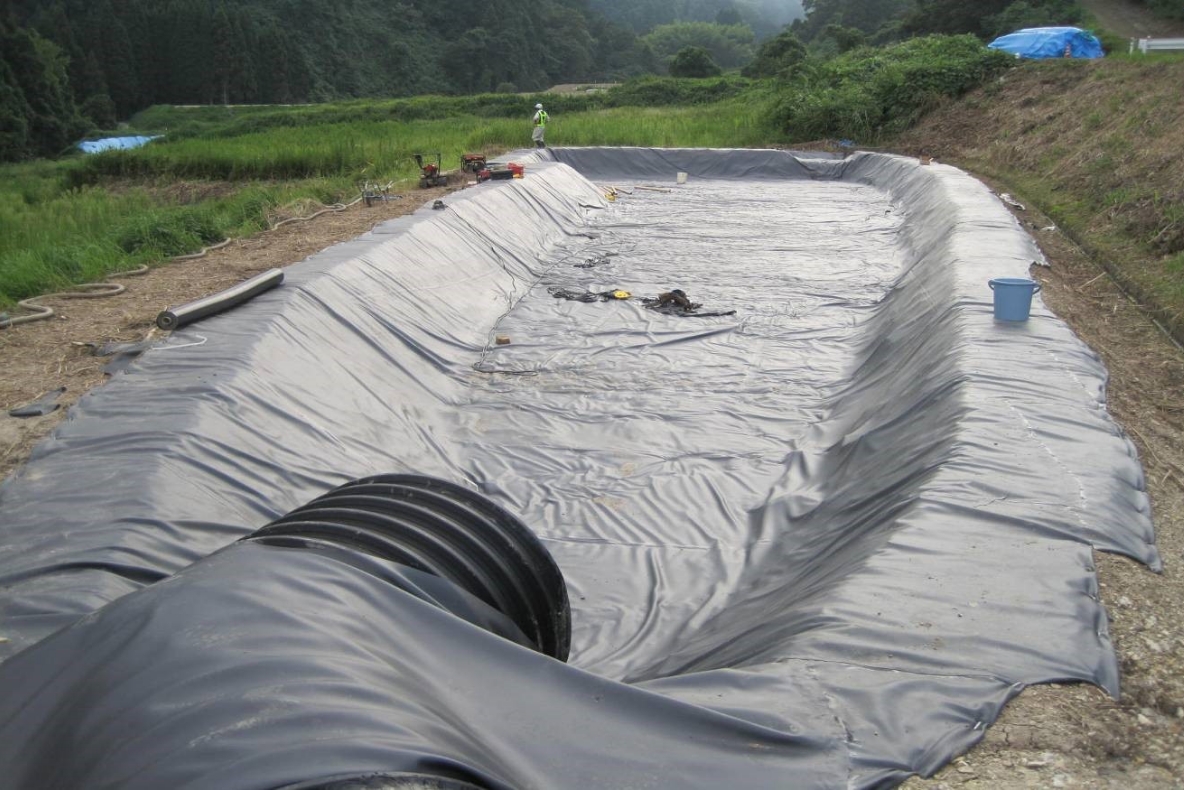
Excellent physical properties
The physical properties of SANPVC sheets fully satisfy the voluntary standards for low elasticity sheets in the “Japan Interceptor Engineering Association” and the physical properties of soft PVC interceptor sheets in the “Land Improvement Project Design Guidelines.
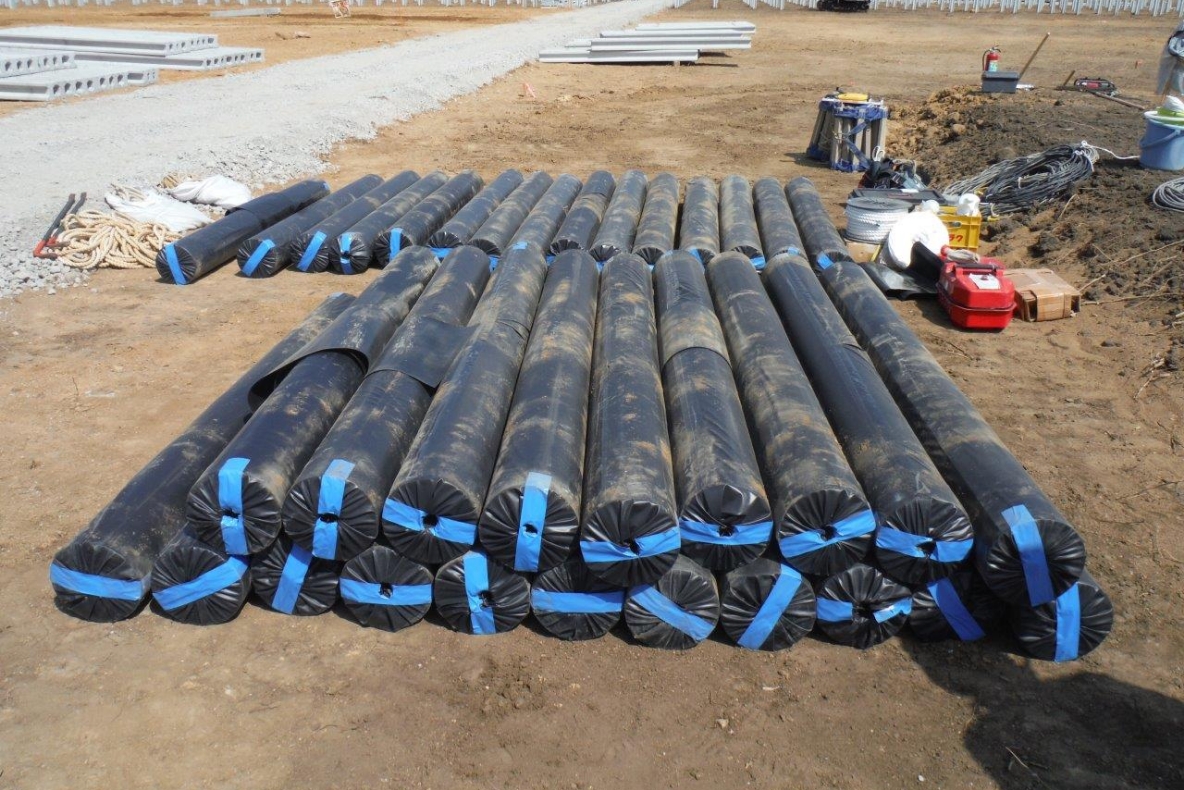
Various processing and joining methods
On-site joining of impervious sheets is possible using adhesives as well as heat fusion welding using special machines such as self-propelled welding machines and hot-air welding machines. We can also provide pre-welding and cutting services according to the site conditions.
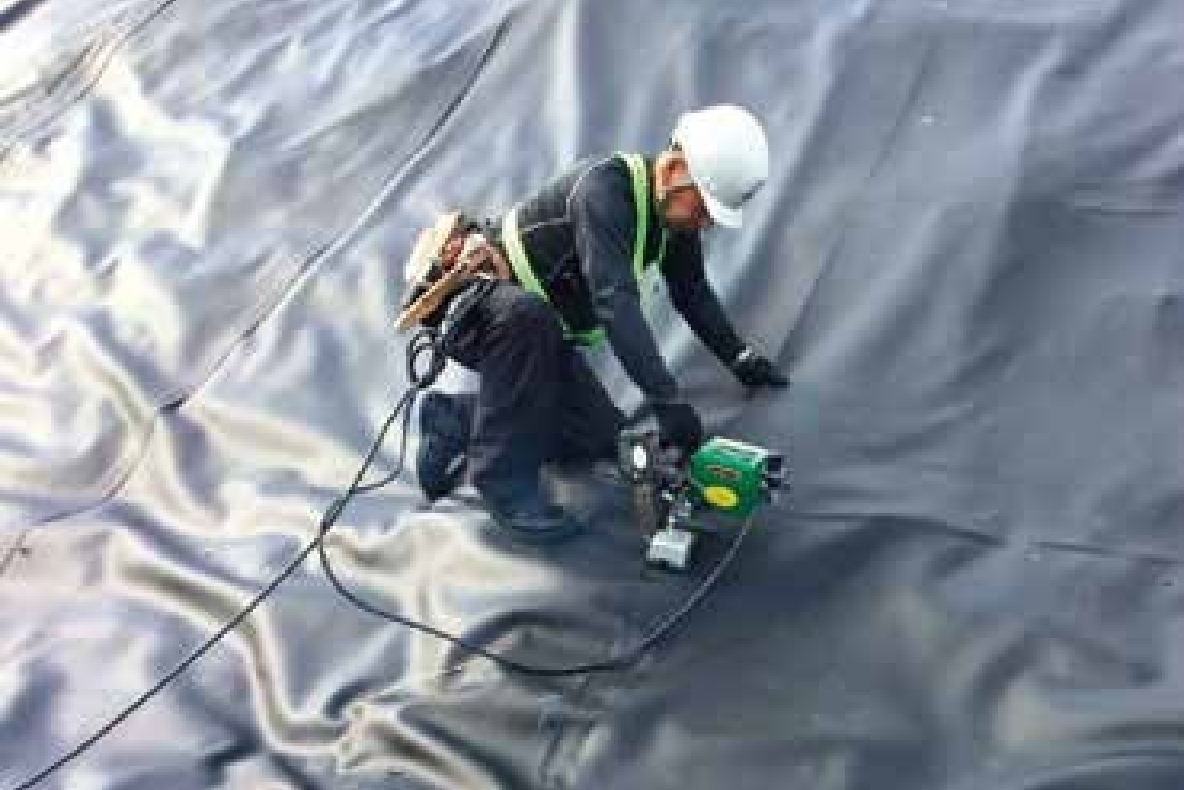
End Fixing Method
The most common method of securing impervious sheets is to embed them by excavation backfilling. The impervious sheet is secured by digging into the ground to a depth large enough to withstand the pull-in load and thermal contraction. In addition, concrete or other structures are usually held in place with flat bars, etc., and then anchors, etc., are used to secure the sheet.
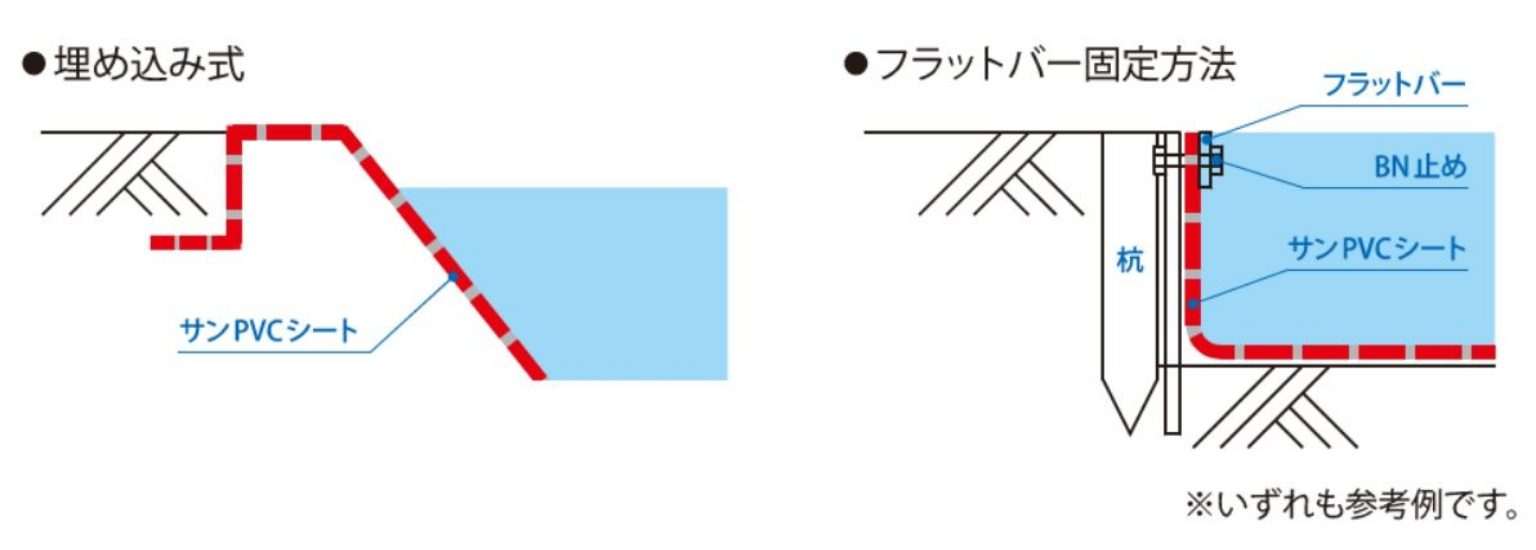
Construction Method
Self-propelled welding situation
Water barrier sheets are joined using a self-propelled welding machine. Thermal welding can be done homogeneously and quickly.
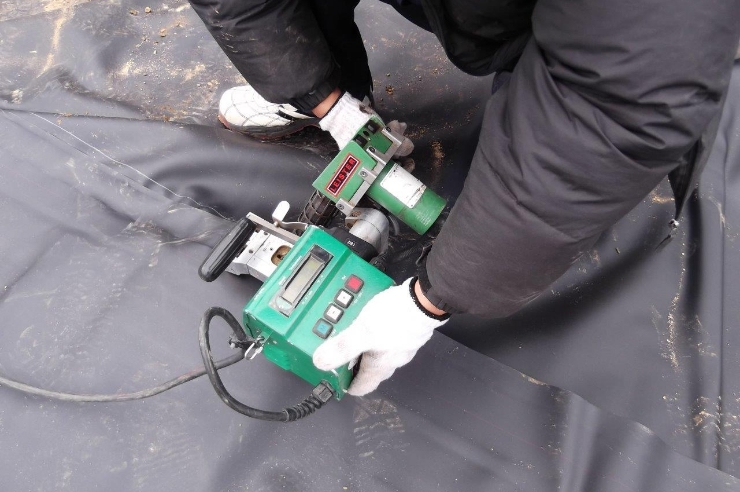
Manual welding status
A manual welding machine is used for detailed joining work. The sheet is heated by hot air emitted from the welding machine and crimped by rollers.
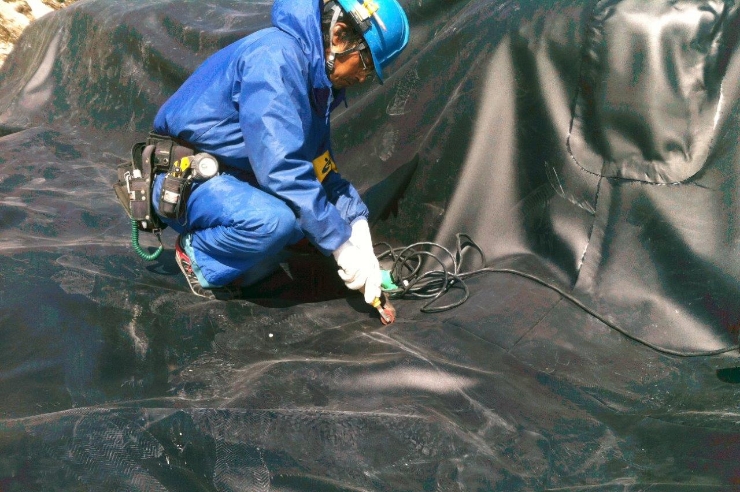
Adhesive bonding status
For adhesive bonding, chloroprene rubber-based adhesives and nitrile rubber-based adhesives are mainly used.
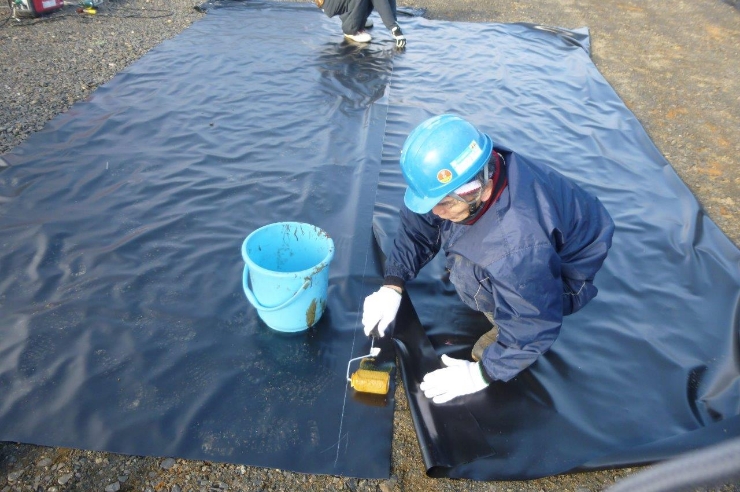
Standard value
For general use: reservoirs, regulating ponds, etc. (0.5mm, 1.0mm, 1.5mm, 2.0mm)
| (data) item | standard value | test procedure |
|---|---|---|
| tensile strength | 1570N/cm2 or more | JIS A 6008 compliant |
| stretching (e.g. body when waking up) | 300% or more | |
| tear strength | 440N/cm or more | |
| specific gravity | 1.35 or less | JIS K 7112 compliant |
For harbor applications: Sand prevention plates (3.0mm, 5.0mm)
| item | standard value | measurement method | Tensile direction | |
|---|---|---|---|---|
| 3.0mm | 5.0mm | |||
| tensile strength | 444N/cm or more | 740N/cm or more | JIS K 6723 compliant | side |
| stretching (e.g. body when waking up) | 180% or more | 180% or more | ||
| tear strength | 150N/cm or more | 250N/cm or more | JIS K 6752 compliant | (weaving) warp |
| Seawater Tensile Residual | – | 90% or more | JIS K 6773 compliant | side |
| Residual Elongation Resistance to Seawater | – | 90% or more | ||
| specific gravity | 1.2 to 1.5 | 1.2 to 1.5 | JIS K 7112 compliant | – |
| Peel strength | – | 30N/cm or more | JIS K 6256 compliant | (weaving) warp |
Usage
- reservoir
- reservoir
- harbors






